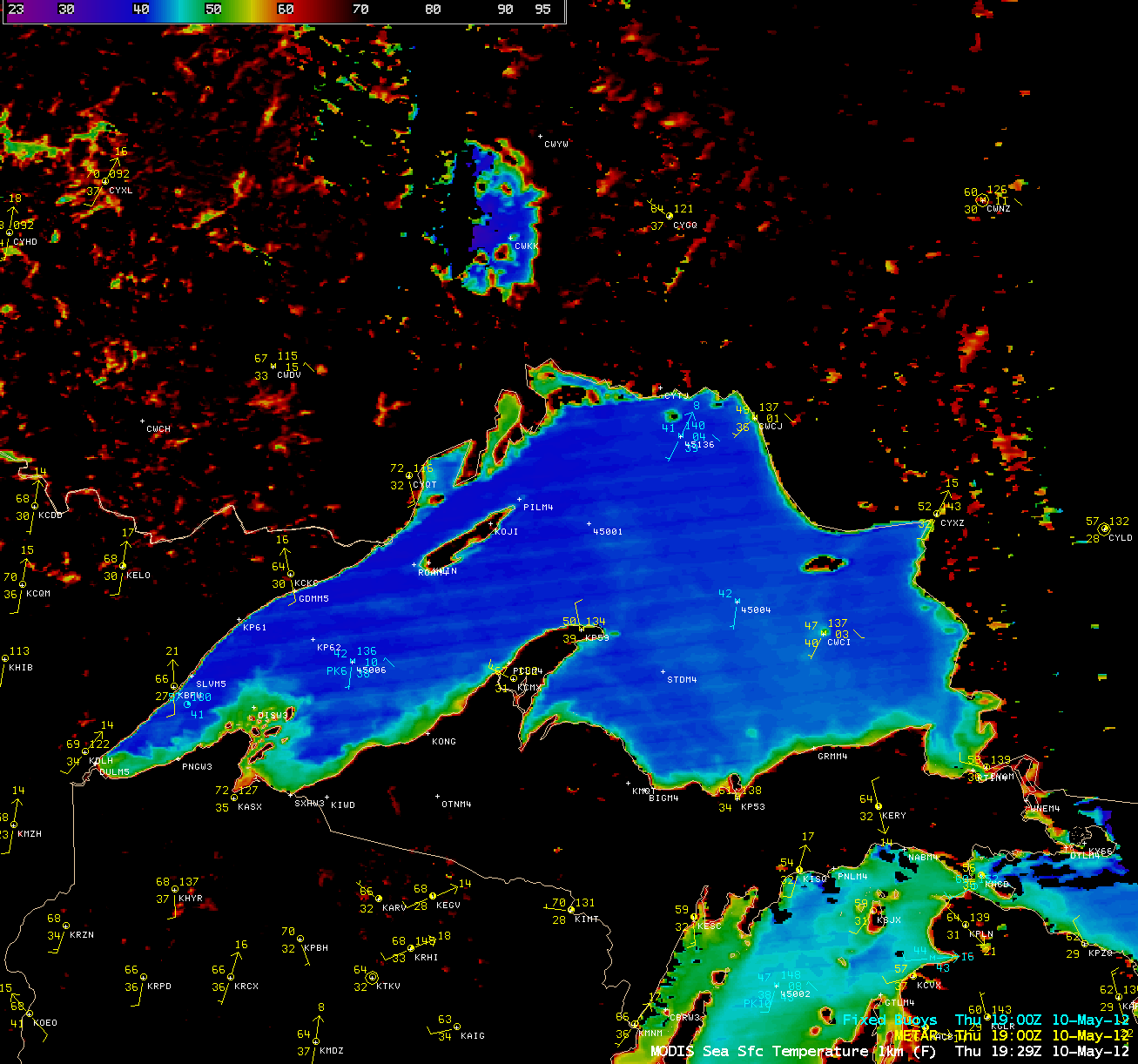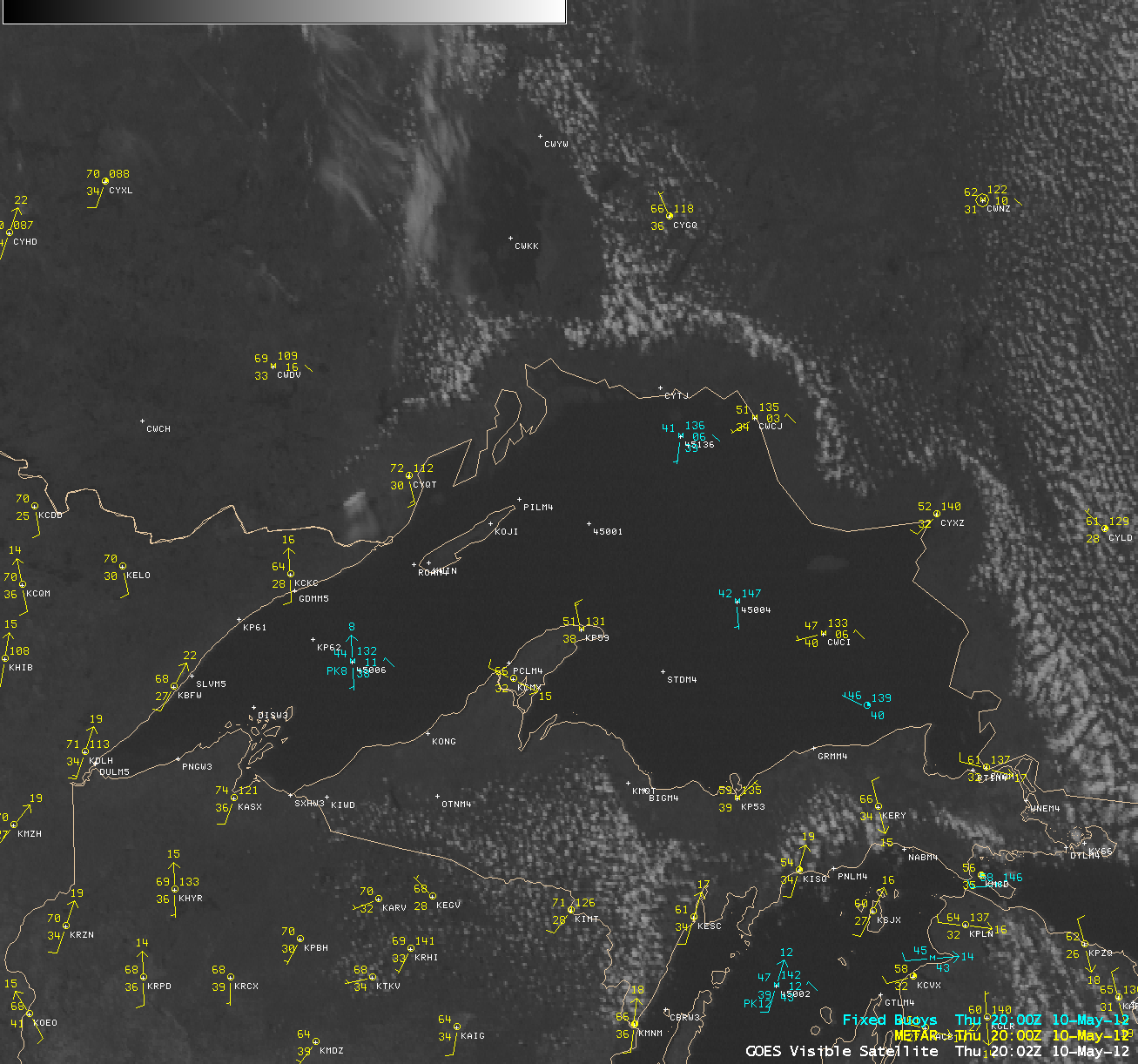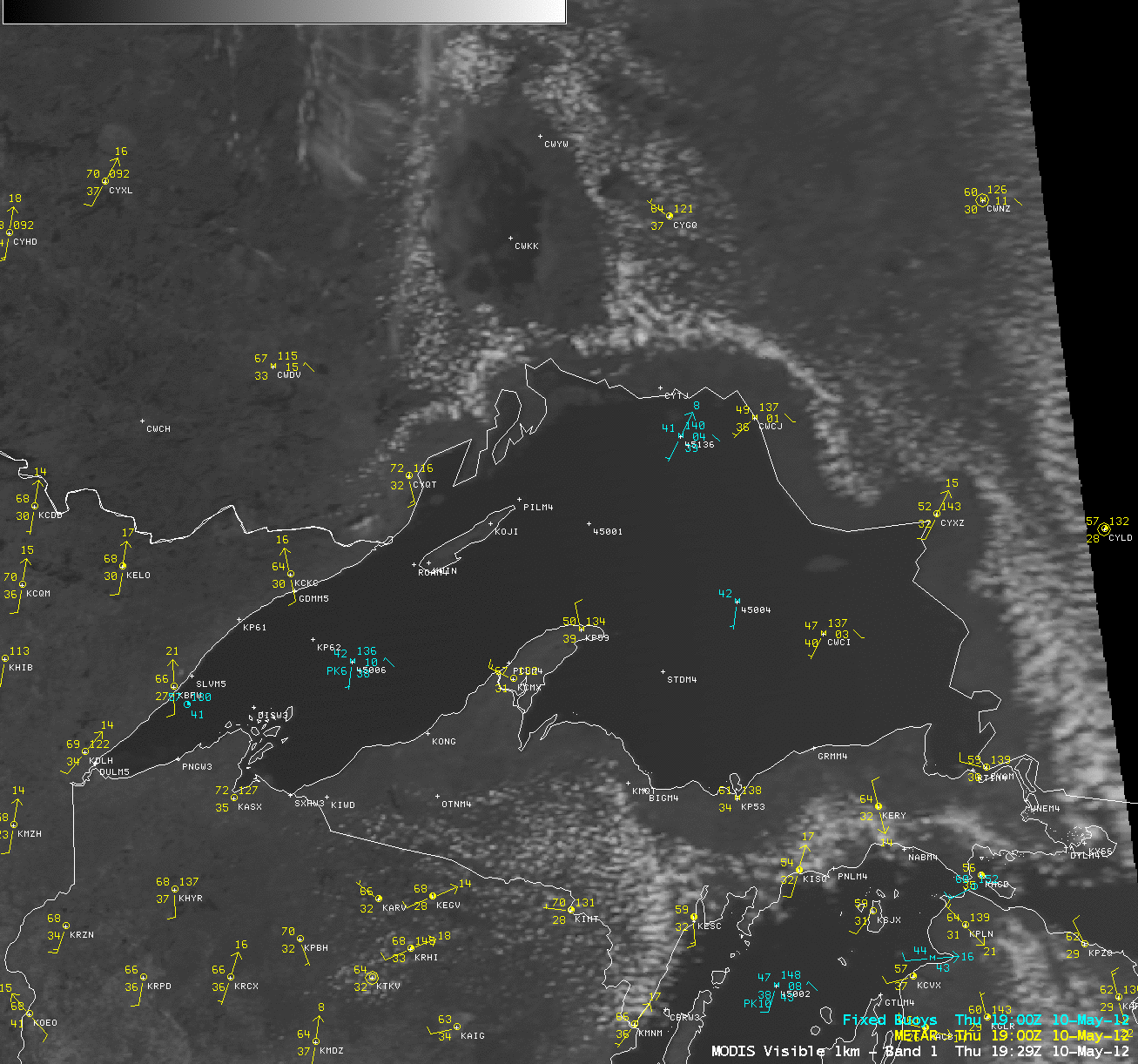Lake breeze boundary around Lake Superior
An AWIPS image of the 1-km resolution MODIS Sea Surface Temperature (SST) product on 10 May 2012 (above) revealed that much of Lake Superior exhibited SST values in the 40s F (darker blue color enhancement), with the coldest SST value being 39.1 F off the coast of far northeastern Minnesota.
After several hours of daytime heating and generally light winds across the region, 1-km resolution GOES-13 0.63 µm visible channel images (below; click image to play animation) showed that a well-defined lake breeze boundary began to appear on the cumulus cloud field. Note that there was a similar lake breeze boundary seen surrounding Lake Nipigon in southern Ontario, Canada (where SST values were as low as 33.5 F).
A comparison of 1-km resolution MODIS visible channel, Land Surface Temperature (LST), and Normalized Difference Vegetation Index (NDVI) is shown below. LST values were generally in the 60s to 70s F surrounding Lake Superior, creating a large thermal contrast to the cold waters of the lake. To the northwest and southwest of Lake Superior, there were a number of areas exhibiting much warmer LST values (in the 80s to around 90 F, darker red color enhancement) — and these areas of warmer LST values generally corresponded to features with a lower NDVI value. In particular, the large Pagami Creek wildfire burn scar (located east of Ely, Minnesota — station identifier KELO) had a maximum LST value of 96 F, with NDVI values less than 0.3 within the large burn scar.




